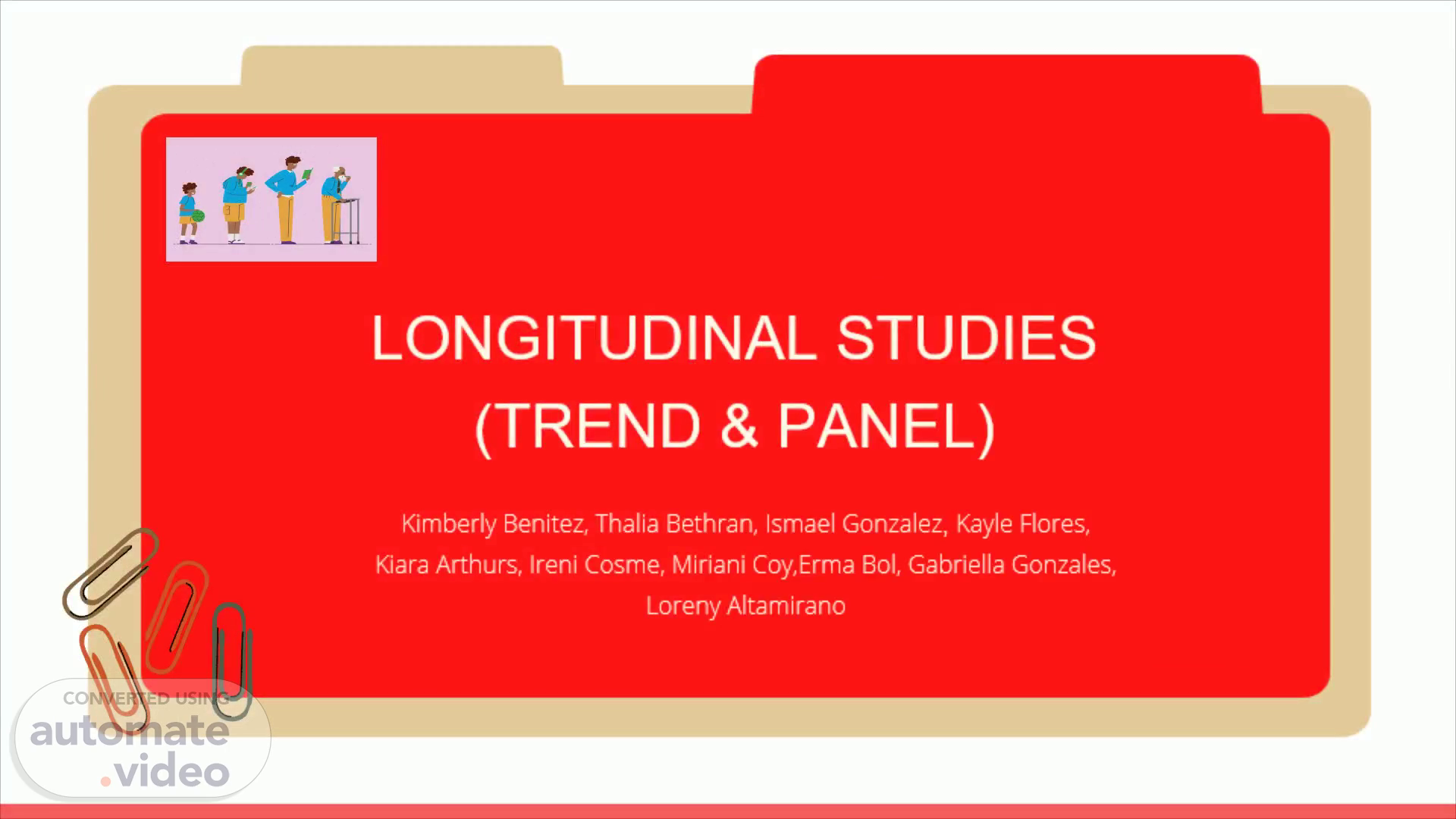
PowerPoint Presentation
Scene 1 (0s)
LONGITUDINAL STUDIES (TREND & PANEL). Kimberly Benitez, Thalia Bethran, Ismael Gonzalez , Kayle Flores, Kiara Arthurs, Ireni Cosme, Miriani Coy,Erma Bol, Gabriella Gonzales, Loreny Altamirano.
Scene 2 (13s)
Description of Research Design. A longitudinal study is classified as a correlational research study. This requires the examination of variables over a lengthy period of time. These types of research can take weeks, months or even years to complete. Longitudinal research can extend decades in some circumstances. (Cherry, 2020) A longitudinal study can be utilized to find associations between factors that aren't related to other variables in the background. This method of observational research entails following the same group of people for a long time. (Cherry, 2020 ).
Scene 3 (37s)
Method Type (quantitative, qualitative, or mixed).
Scene 4 (51s)
Methods for data collection. The method for data collection used in the longitudinal study were: A questionnaire A survey.
Scene 5 (1m 0s)
Trend & Panel Studies. Trend Study - This study samples different groups of people from the same population in different points in time. Data that is acquired consecutively from the same participants throughout time is referred to as longitudinal data. By asking the same responders the same questions in numerous waves throughout time, this type of data may be particularly useful in analyzing trends and changes over time.(Hayes, 2021). Panel Study - Is a survey type of longitudinal study. It can be a qualitative or quantitative survey that is used to measure people’s behavior. Panel studies can reveal both net change and gross change in the dependent variable. Panels can be used for short term data collection as well. Panel studies also sample from the entire age range, then the repeated measures are collected throughout the lifeline..
Scene 6 (1m 35s)
Analysis used for longitudinal study. Analysis of Variance (ANOVA) approaches for longitudinal data include a repeated measures ANOVA and multivariate ANOVA (MANOVA). Are both analysis use for longitudinal study. Both focuses on comparing group means (e.g., the TMS scores between “low,” “medium,” and “high” disease categories). Neither informs about subject-specific trends over time..
Scene 7 (1m 53s)
Research Report Format. Abstract or Summary Introduction Background Methods Results Conclusion.
Scene 8 (2m 1s)
Conclusion. The purpose of this research is for you to start think about questions related to changes over time. This research consists questions require longitudinal data. We described two of longitudinal studies which are the trend study and the panel study..
Scene 9 (2m 15s)
References. Han, J. (2021, October 18). Questionnaire vs survey: Is there a difference? QuestionPro . QuestionPro. Retrieved November 8, 2021, from https://www.questionpro.com/blog/questionnaire-vs-survey-difference Hayes, A. (2021, November 3). Longitudinal Data . Investopedia. Retrieved November 7, 2021, from https://www.investopedia.com/terms/l/longitudinaldata.asp . Cherry, K. (2020, May 2). The Pros and Cons of Longitudinal Research . Verywell Mind. Retrieved November 7, 2021, from https://www.verywellmind.com/what-is-longitudinal-research-2795335 . Panel survey: Definition with examples https://www.questionpro.com/blog/panel-survey / Trend, Cohort Or Panel? (2010, June 29). Mr. Wilson Special Education Blog https://mrwilsonspecialeducation.wordpress.com/2010/06/29/trend-cohort-or-panel/ Panel studies. obo. (n.d.). Retrieved November 8, 2021, from https://www.oxfordbibliographies.com/view/document/obo-9780199756384/obo-9780199756384-0108.xml ..
Scene 10 (3m 6s)
Credit. Participants: Kimberly Benitez, Thalia Bethran, Ismael Gonzalez, Kayle Flores, Kiara Arthurs, Ireni Cosme, Miriani Coy,Erma Bol, Gabriella Gonzales, Loreny Altamirano Media Sources: Image from Economic and Research Council Image from The Like Minded.